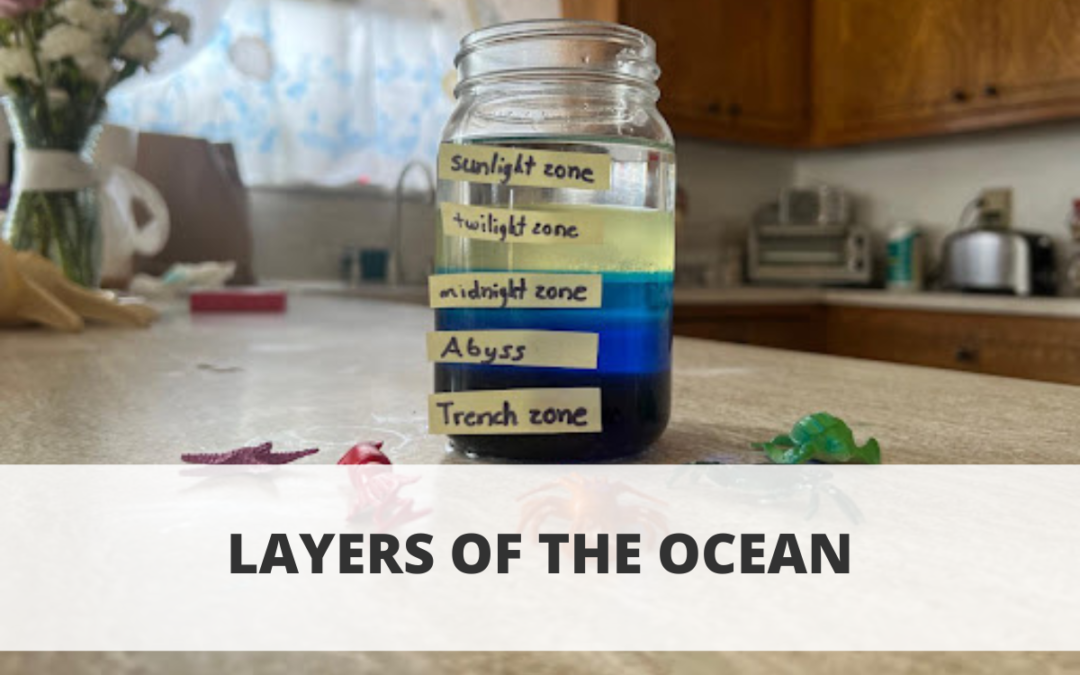Learn about the different layers of the ocean with this fun activity.
Materials:
- Mason jar or other clear jar
- Blue food coloring
- Corn syrup
- Vegetable oil
- Blue dish soap
- Water
- Rubbing alcohol
- Funnels
- Medicine or eye dropper
- Measuring cup ½ cup
- Optionally tape and a marker to label
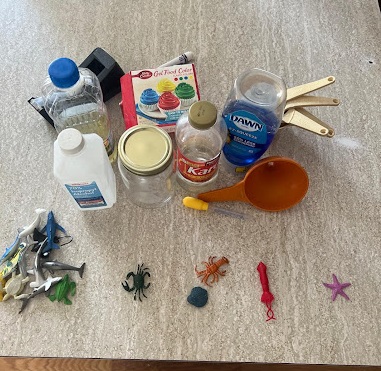
Steps:
1. First start with the trench zone measure ½ a cup of corn syrup
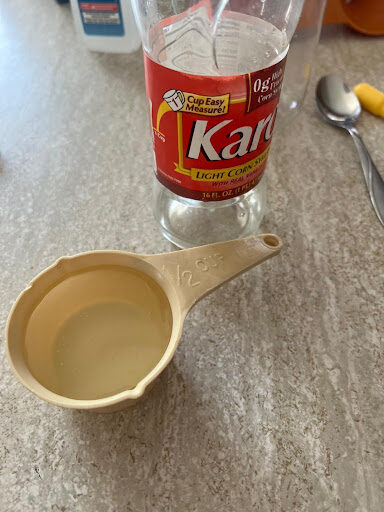
2. Add a lot of blue food color so this layer is very dark
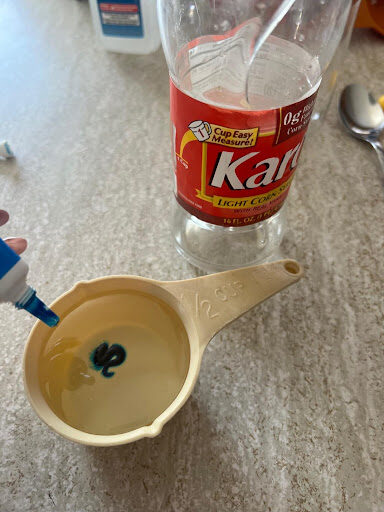
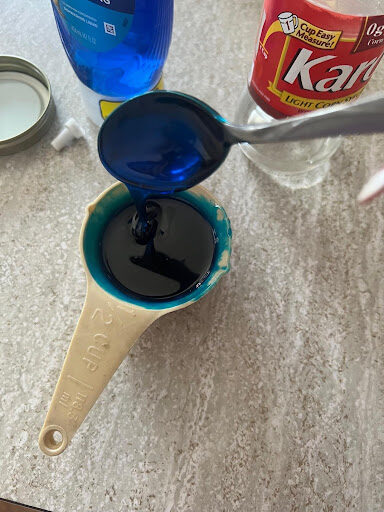
3. Use your funnel to add this layer into your jar
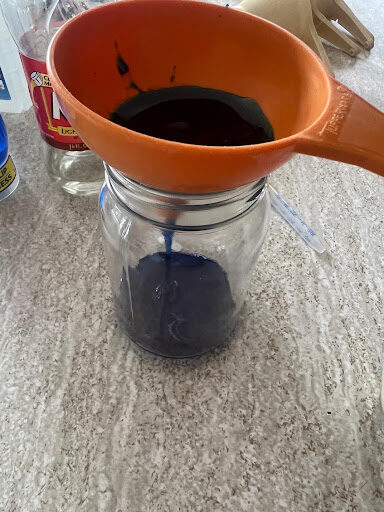
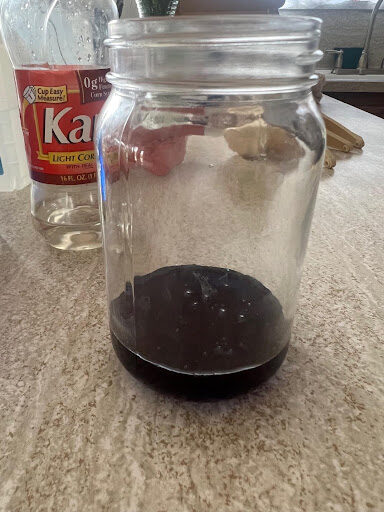
4. The trench layer is the deepest part of the ocean. The deepest part of the ocean is called the challenger deep which is located beneath the western Pacific Ocean in the southern end of the Mariana trench and is about 35,876 feet deep! You can find creatures such as starfish, and sea cucumbers in this zone
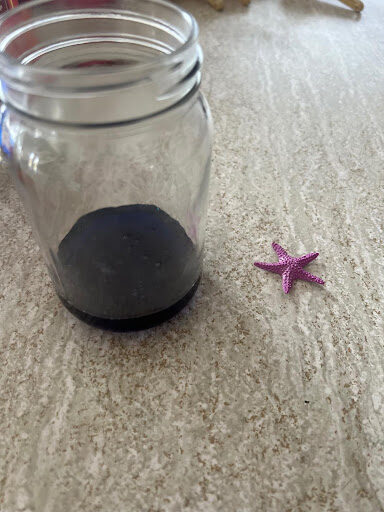
5. Next add the abyss. Measure ½ cup of blue liquid dish soap
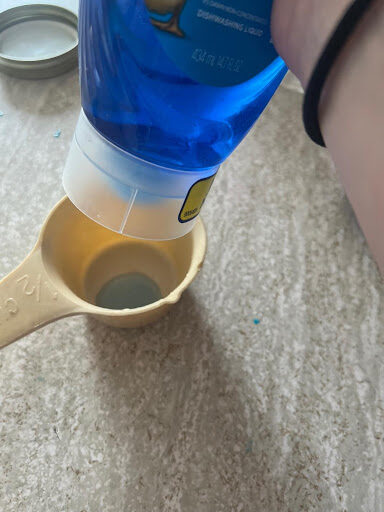
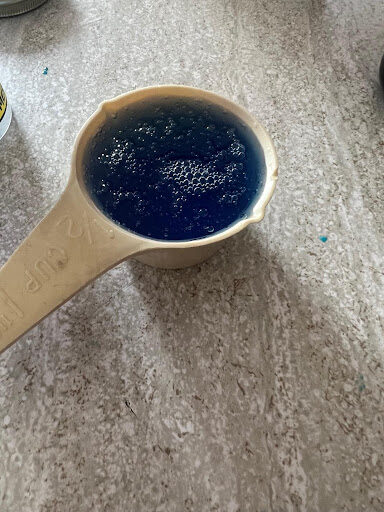
6. Use your funnel to carefully and slowly add the blue liquid dish soap on top of the corn syrup
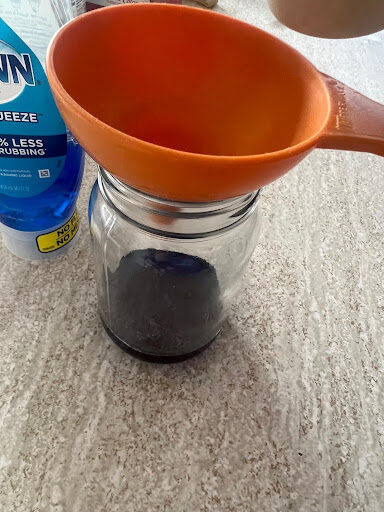
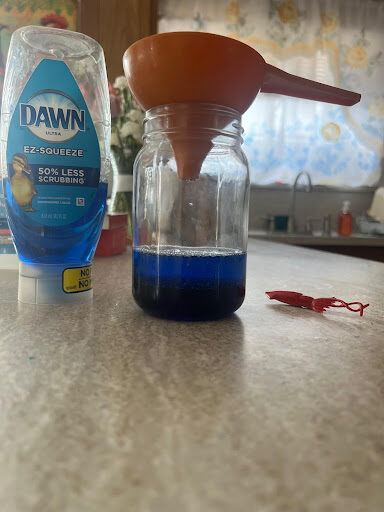
7. The abyss ranges from about 13,100 feet deep to 20000 feet deep. There is no light in this zone and few creatures. You may find squid is this zone
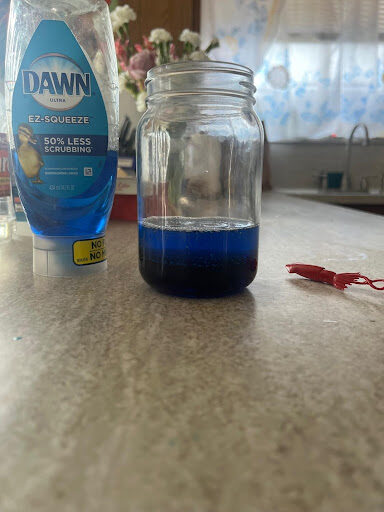
8. Next add the midnight zone. Measure ½ cup of warm water
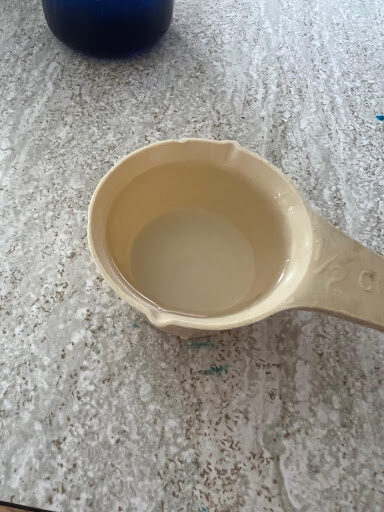
9. Add a few drops of food coloring
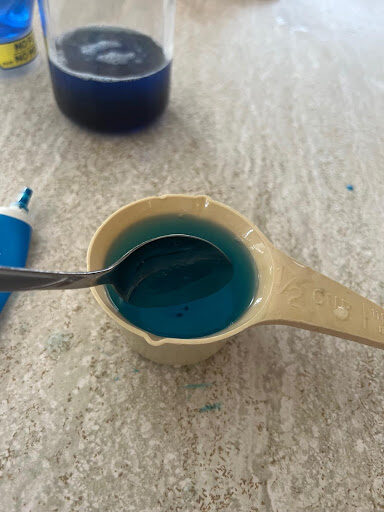
10. Slightly and carefully tip your jar to the side and use your funnel to carefully and slowly pour in your water along the side
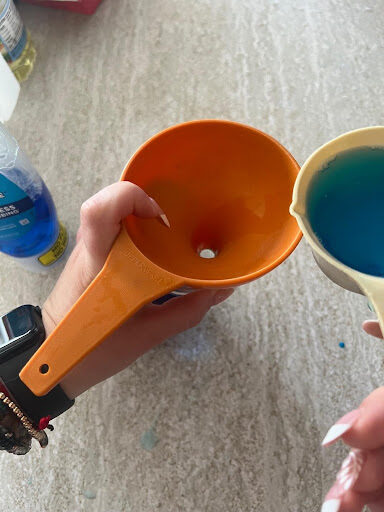
11. The midnight zone ranges from about 3,200 feet to 13,100 feet and has many creatures including squid and angler fish
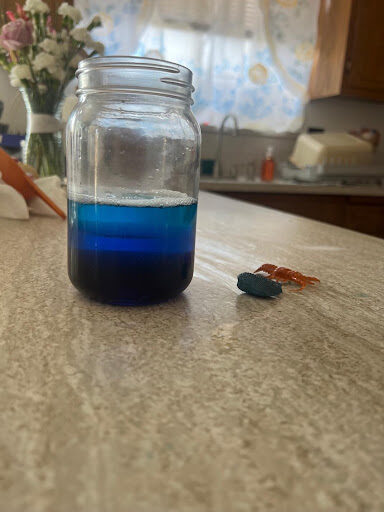
12. Now add the twilight zone. Measure ½ cup of vegetable oil
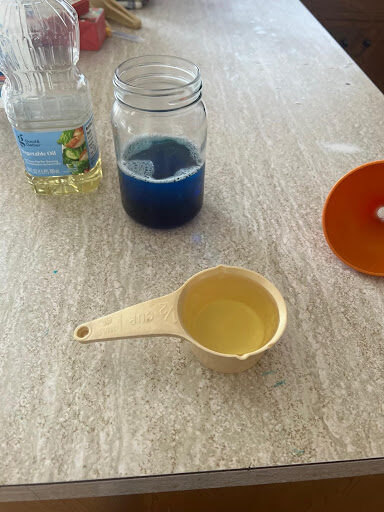
13. Use your funnel to carefully and slowly add in the vegetable oil by tilting your jar to the side and letting the vegetable oil run along the side of the jar
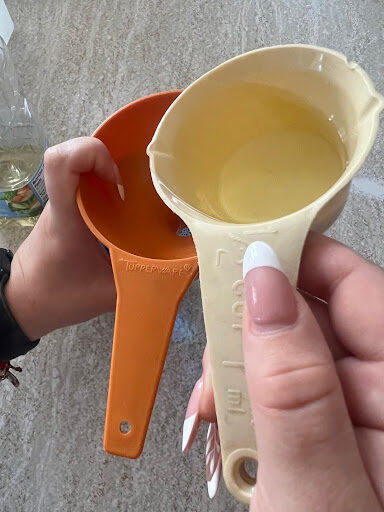
14. The twilight zone ranges from about 700 feet to 3200 feet and includes creatures such as crabs
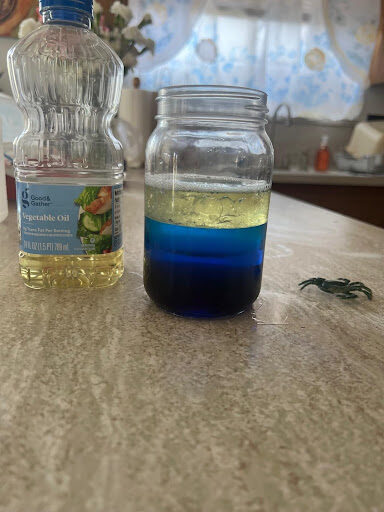
15. Now add the sunlight layer. Measure ½ cup of rubbing alcohol
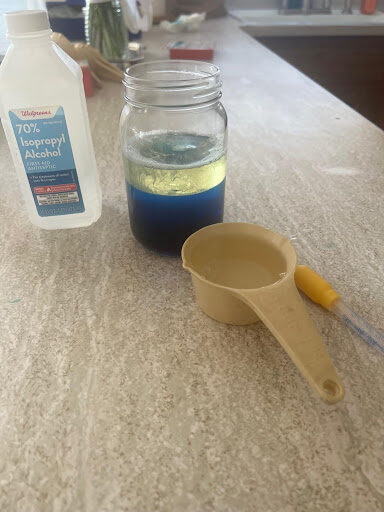
16. Use an eye dropper or medicine dropper to carefully add the rubbing alcohol against the side of your jar
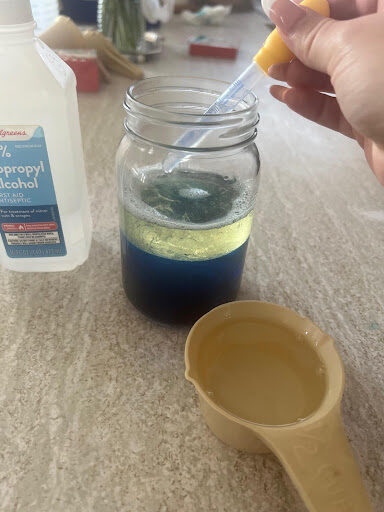
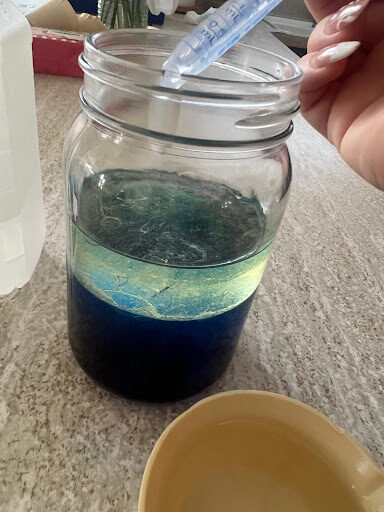
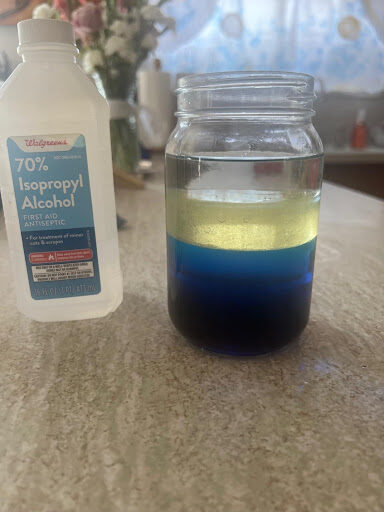
17. The sunlight layer ranges from the sea surface to about 700 feet and has a lot of ocean life including sharks and turtles
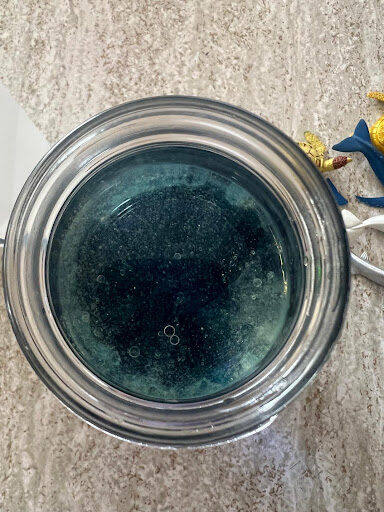
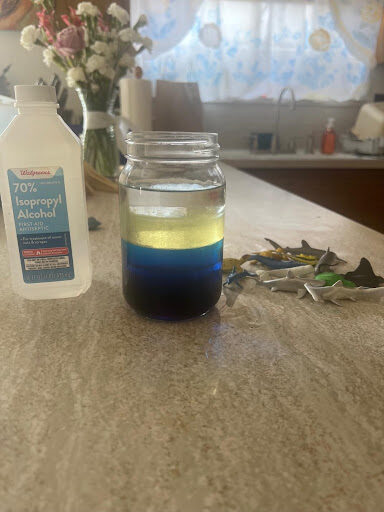
18. Optionally add labels for the layers
The density of each substance is different with the heaviest density being on the bottom, this is what creates the layers. We hope you enjoyed this activity and learned about the ocean!

